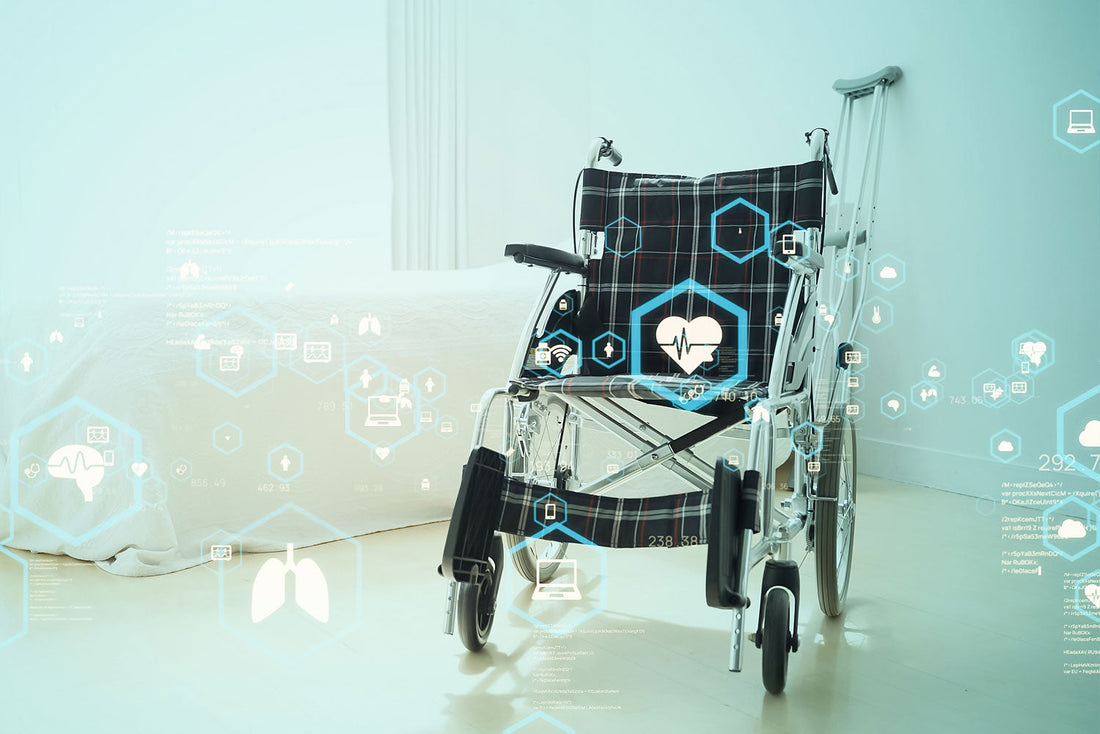Introduction
Home medical equipment (HME) plays a vital role in helping individuals manage chronic conditions, recover from injuries, and maintain independence. With advancements in technology and healthcare delivery, durable medical equipment (DME) is evolving to meet the needs of an aging population and patients seeking better at-home care solutions.
As the demand for home healthcare grows, innovative medical devices, telehealth integration, and personalized care solutions are shaping the future of home medical equipment. Whether you’re a caregiver, a healthcare provider, or someone who relies on DME, staying informed about these trends will help you make the best decisions for your health.
Let’s explore the latest advancements in home medical equipment and what’s coming next in this rapidly changing industry.
1. Smart & Connected Medical Devices
One of the biggest trends in home medical equipment is the integration of smart technology and IoT (Internet of Things). Many modern medical devices can now connect to apps, cloud platforms, and healthcare systems, allowing for real-time monitoring and data tracking.
Examples of Smart Home Medical Devices:
- Smart CPAP Machines – These devices can track sleep data and adjust settings automatically to improve sleep apnea therapy.
- Wearable Health Monitors – Smartwatches and biosensors can track heart rate, oxygen levels, and even detect falls in elderly patients.
- Connected Glucose Monitors – Diabetic patients can use continuous glucose monitors (CGMs) that sync with mobile apps for better blood sugar management.
With these advancements, home healthcare providers can monitor patients remotely, reducing the need for frequent doctor visits and hospitalizations.
2. Telehealth & Remote Patient Monitoring
Telehealth has transformed healthcare delivery, and home medical equipment is following suit. More DME manufacturers are designing equipment that integrates with remote patient monitoring (RPM) systems.
How Remote Monitoring is Changing Home Care:
- Patients with chronic conditions like COPD, heart disease, or diabetes can share their vitals with doctors in real-time.
- Doctors can adjust treatment plans based on data from home medical devices without requiring in-person visits.
- Caregivers and family members can receive alerts when a patient’s health metrics go out of range.
This technology not only improves patient outcomes but also reduces healthcare costs by preventing emergency hospital visits.
3. AI-Powered and Automated Home Medical Equipment
Artificial intelligence (AI) is playing a growing role in HME, making devices smarter and more efficient. AI-driven predictive analytics and automation are helping patients receive proactive care.
Examples of AI in Home Medical Equipment:
- AI-Powered Medication Dispensers – Smart pill dispensers remind patients to take their medication and alert caregivers if doses are missed.
- Automated Oxygen Concentrators – These devices can adjust oxygen levels based on a patient’s real-time breathing patterns.
- AI Speech Assistants for Elderly Care – Virtual assistants can help seniors manage their daily routines and provide reminders for medical appointments.
AI integration is making DME more user-friendly, especially for seniors and individuals with limited mobility.
4. Advancements in Mobility Equipment
Mobility aids are improving with lighter materials, ergonomic designs, and smart technology to help individuals with disabilities or injuries move more freely.
Innovations in Mobility Equipment:
- Electric and Smart Wheelchairs – New models come with voice control, GPS navigation, and auto-braking systems for enhanced safety.
- Foldable Walkers & Lightweight Rollators – More portable designs make it easier for patients to travel with their mobility aids.
- Exoskeleton Technology – While still in development, robotic exoskeletons are helping patients with paralysis regain movement.
These enhancements allow for greater independence and improved quality of life for those who rely on mobility aids.
5. Eco-Friendly and Sustainable Home Medical Equipment
Sustainability is a growing concern in healthcare, and DME manufacturers are responding by creating more eco-friendly products.
Sustainable Medical Equipment Trends:
- Reusable Incontinence Products – More patients are opting for washable, reusable alternatives to disposable incontinence supplies.
- Biodegradable Medical Supplies – Some companies are developing compostable gloves, wound dressings, and catheters to reduce plastic waste.
- Energy-Efficient Devices – New CPAP machines and oxygen concentrators are being designed to use less energy, lowering carbon footprints.
These changes are helping reduce medical waste and make home healthcare more environmentally friendly.
6. Personalized and 3D-Printed Medical Equipment
Customization is becoming a key focus in home medical equipment, thanks to 3D printing technology and personalized manufacturing.
How 3D Printing is Changing Home Healthcare:
- Custom Prosthetics & Orthotics – Patients can now receive personalized limb replacements and braces that fit perfectly.
- Tailored Wheelchair Seating – Custom-molded seats improve comfort and reduce pressure sores for wheelchair users.
- Specialized Medical Supplies – Companies are producing personalized pill dispensers, hand splints, and even hearing aids.
This level of customization ensures that patients receive the best possible fit and support for their unique needs.
7. Increased Access to Home Medical Equipment Through Insurance & Online Platforms
More individuals now have access to DME thanks to expanding insurance coverage and online ordering options.
Key Developments:
- Medicare & Medicaid Expanding DME Coverage – More home healthcare products are now covered by insurance, making them accessible to a wider population.
- E-Commerce Growth – Patients can now order home medical equipment online and have it delivered directly to their homes.
- Subscription-Based Medical Supply Services – Companies offer auto-ship programs for essentials like incontinence products, oxygen supplies, and diabetic testing kits.
These improvements ensure that patients receive the medical supplies they need without hassle.
Final Thoughts
The future of home medical equipment is bright, with new innovations making DME more efficient, accessible, and personalized than ever before. From smart devices and AI-powered solutions to sustainable materials and remote monitoring, these advancements are transforming home healthcare.
As these technologies continue to evolve, SurfMed remains committed to providing the latest, high-quality home medical equipment to improve patient outcomes and enhance quality of life.
Looking for Reliable Home Medical Equipment?
Visit SurfMed.com to explore our selection of DME, respiratory care, mobility aids, and more! Stay ahead of the trends and find the best solutions for your home healthcare needs.

